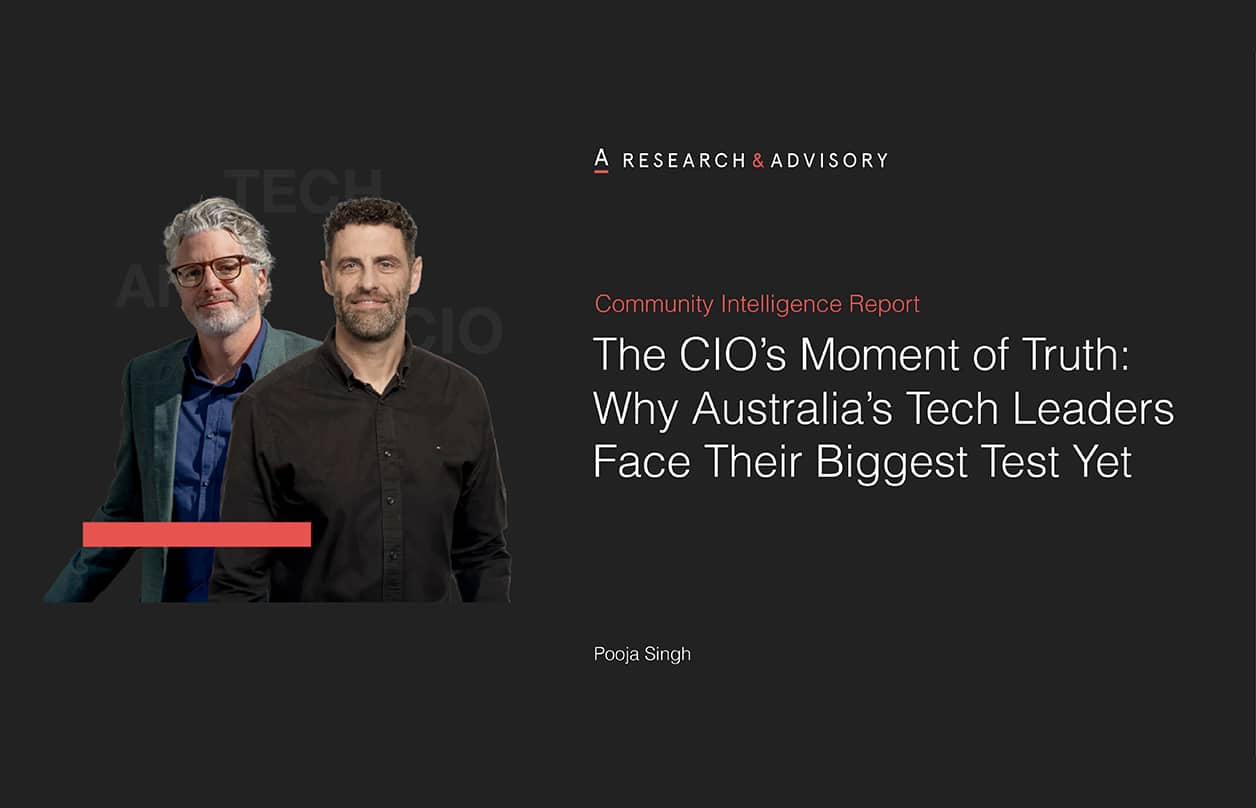
Executive summary
The pressure is mounting. Your AI roadmaps face sceptical executives demanding proof over promises, while pilot projects deliver mixed results and investment committees question value delivery. Workforce anxiety deepens as transformation fatigue and fears of AI driven displacement set in, yet you’re still expected to turn strategy presentations into tangible, quantifiable impact. If this sounds familiar, this moment of reckoning may actually be your greatest opportunity.
This scene plays out frequently in Australia’s executive boardrooms: meticulously crafted AI roadmaps colliding with increasingly sceptical CFOs, wary of yet another multi-million dollar “transformation” request. As 2026 approaches, the AI gold rush is over—what remains is a test of value, governance, and real-world impact.
To unpack this complex landscape, we draw on insights from David Heacock and Alan Sharvin, executive advisors to ADAPT with deep experience guiding Australia’s technology leaders. Heacock, who has worked with CIOs across enterprise and government, highlights the critical “translation gap” between technical excellence and business accountability—and why the coming AI market correction will separate true value creators from the rest.
Sharvin, former CIO at Tabcorp, highlights how successful technology leaders build executive allyship and transition from project-centric teams to product-based delivery models that drive continuous business outcomes. Combined with findings from ADAPT’s CIO Edge Survey of more than 130 Australian CIOs, their perspectives illuminate why this moment of intense scrutiny isn’t a crisis to survive—it’s the defining opportunity of the decade.
Across Australia’s largest enterprises, a fundamental shift is underway. CIOs who built their credibility on digital transformation narratives and AI-first strategies now face a sobering reality. Pilot projects have plateaued. Proof-of-concepts deliver mixed results. And those substantial AI budgets? They’re under intense scrutiny.
Yet here’s the critical insight most advisors miss: this inflection point represents the most significant opportunity for technology leaders in decades



